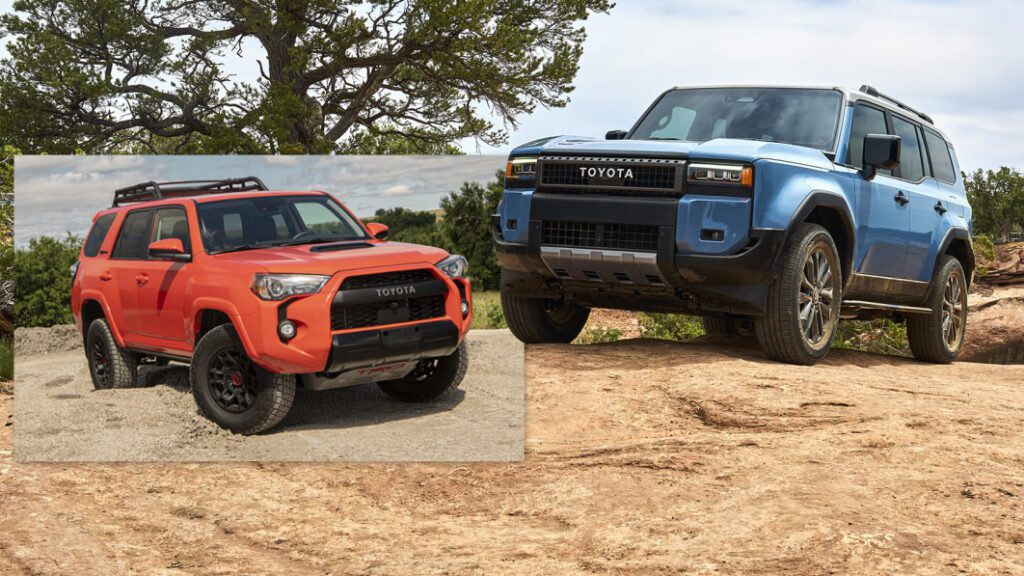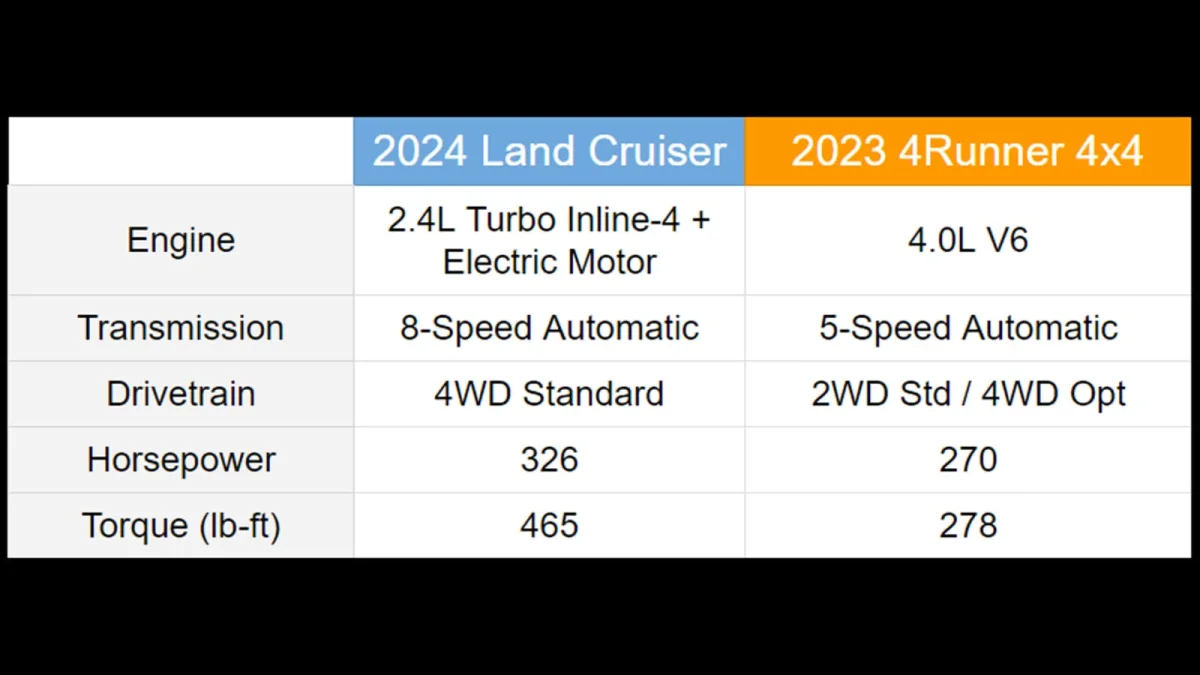2024 Toyota Land Cruiser vs 2023 Toyota 4Runner Spec Comparison

There is a new Toyota Land Cruiser, and if you’re like us, you’re very excited about it. It looks great and the specs are compelling. It’s also fundamentally different from the last Land Cruiser. Besides being exclusively powered by a turbocharged hybrid powertrain, it is considerably smaller and cheaper than before. That got us thinking: Toyota already has a smaller, cheaper off-roader that readily handles family transport. How does this smaller, cheaper Land Cruiser compare to the already smaller, cheaper Toyota 4Runner?
We dug into the specs and through together a pair of charts to provide the answer. First, let’s take a look at the dimensions: wheelbase, length, width, height and ground clearance (all in inches), as well as the approach, departure and breakover angles (all in degrees). Note that the 4Runner numbers are for most four-wheel-drive models. The TRD Pro, Limited and TRD Sport could theoretically be different.
As you can see, the new 2024 Land Cruiser may be smaller than its predecessor, but it’s still bigger than the existing 4Runner. If we were to make an educated guess, it seems likely that the next-generation 4Runner will be very similar to the current one so it doesn’t run into the Land Cruiser’s territory. We also wouldn’t be surprised if it was a bit smaller, since those looking for their Toyota off-roader to serve as family transport may be likely to look toward the Land Cruiser anyway.
Today’s 4Runner has better clearances than the new Land Cruiser, and if the next-generation holds the dimensional line as we suspect, it would too. It has greater ground clearance than the Land Cruiser as well as superior approach and departure angles. I strongly suspect that the 4Runner would have a breakover advantage of about 2 degrees, but Toyota doesn’t publish a figure for the 4Runner and its figure for the Land Cruiser doesn’t equal what the usual breakover angle calculation would amount to, so let’s just leave it at TBD.

As for the powertrain, the Land Cruiser torpedoes the 4Runner, but then that wouldn’t be hard to do. The 4Runner’s 4.0-liter V6 and five-speed automatic combo is one of the most antiquated powertrains on the market (I’m struggling to think of something ye older), whereas the i-Force Max Hybrid system is Toyota’s latest and greatest. As you can see, power and torque aren’t remotely close. The Land Cruiser should be quite quick, whereas the 4Runner is quite slow (especially with the heavier TRD Pro).
Toyota did not release fuel economy figures for the new Land Cruiser, but if they aren’t superior to the 4Runner’s 17 mpg combined, we’d be stunned. That said, we’ve found the i-Force Max hybrid system to greatly underperform its fuel economy estimates in the Sequoia and Tundra. Though the estimates say the Sequoia should get 20 mpg combined with four-wheel drive, we saw real-world figures closer to 15 mpg combined. Multiple Tundras have similarly been about 5 mpg off its estimates. We’ll have to wait and see whether the Land Cruiser follows this trend.
In the end, the Land Cruiser looks sensational, the specs are intriguing, and it only makes us more eager to find out how Toyota will redesign the 4Runner to fit into its revised off-roader lineup.
Related Video




